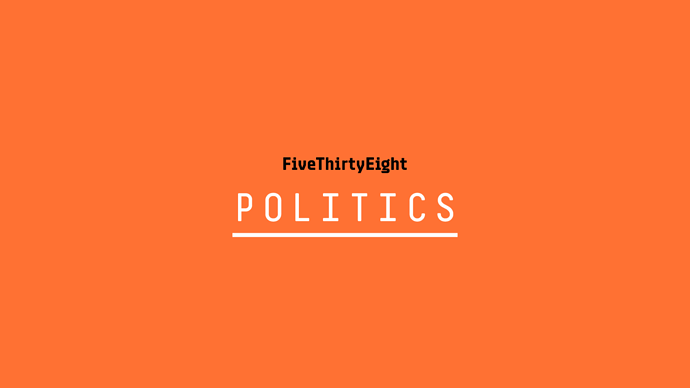In the last 4 years, especially the first 3 years of that time, with my marketplace insurance policy, they covered very few doctors in my county and no medical facilities/radiology screening centers/hospitals at all in my county. I have had to drive 60 or 70 miles one-way to do just about anything. And in this time, I’ve had to have several surgeries, regularly visit a number of specialists, and have many imaging and blood tests. It has not been as convenient as being able to do all this in my own county would have been…
but it must be said that I have been generally pleased with the level of care that I’ve received, although I’ve had to be very diligent, and to really be my own “case manager”, as, otherwise, a lot would have fallen through the cracks regarding my care, abnormal test results would not have been noticed if I hadn’t brought them up, and mistakes are continuously being made on my medical records. (But that general sloppiness is probably par for the course in most insurance networks across the country, sadly.)
Anyway, now, after 4 years, after I put in a lot of research to choose from the available doctors and a lot of faffing around to get on new-patient lists, I’ve collected together some doctors who (mostly) are not bozos and who “know” me at least slightly, some of whom have done complicated surgery on me so I feel kind of connected to them —
but my insurance company of the last 4 years is leaving my state at the end of 2017, and the only possible marketplace company that is going to operate in my county has an entirely different doctor/facility network, so everything I’ve built up in the last 4 years: relationships, medical records, online patient portal, floor plan knowledge (and even driving-direction and parking knowledge) for me and for my relatives of hospitals and facilities, the doctors’ trust that when I say “I am noticing x happening” that x is really happening and needs to be checked into… well, all that is going to go up in a puff of smoke in 10 weeks.
[And right when I may well need another complicated surgery pretty soon (but it probably wouldn’t be possible to get it scheduled before Christmas, because of what’s involved for it).]
When I first heard that the cost-sharing subsidies had been abolished (in their current form) a few days ago, my heart sank. I actually couldn’t sleep until about 5 am that night because I didn’t know what was going to happen to the insurance situation in my county/state – I didn’t know if the only company that was scheduled to offer 2018 plans in my area would pull out of the marketplace at the last minute on the basis of that surprise announcement.
However, since then, I’ve read a number of articles about it, and I checked out some of the information from the filings that were made to my state’s insurance department by the insurance company that proposed to serve my county in 2018, and I am not so worried now that the company might pull out before Nov. 1st, because in their July-September filings to my state, they ALREADY had planned for the 2018 cost-sharing subsidies to be ended by the federal govt., so they proposed to raise their rates 20-25% to compensate for that. They were going to charge that much extra anyway, whether or not the subsidies were actually cancelled by the federal govt.
I think that my state’s officials had told that company they had to share the increased costs across all plans and levels, so they didn’t just load up the silver plans with the high rate increases (like insurance companies could do in California, for example), they raised the cost of all the plans by an average of 20-25%.
To the people who think that well-paid and/or “professional” people don’t need to use the marketplace insurance, because surely their company would offer an employee insurance plan, or they would be rich enough to buy a plan on the (now-disappeared) individual market, a couple of weeks ago I had a meeting with a highly-educated ‘professional’ service provider who probably earns quite a lot compared to most people in my region, who heads a company that employs about 25 people, and at the end of our meeting, that person said to me, “Hey Oppidum, do you by chance have marketplace insurance?” I said, “Yes”. “They” then said, “I do too… my insurance company is leaving the state’s exchange.” I said, “Mine is the same one”. “They” looked at me with a concerned expression and said, “What are we going to do next year? What is going to happen? Is there going to be anything in our county? Isn’t this a mess?” I said, “I know!”
In the last couple of weeks, I have asked some of my doctors’ staffpeople if, come January, their offices will refer me to equivalent doctors in the new provider network, and I was told that their system has a policy not to give any referrals outside of their system, and I will be on my own to identify and choose new doctors and facilities.
I don’t know if my actual physicians might be a bit more open with me one-on-one in appointments about who of their colleagues they would recommend I move to, because I haven’t wanted to bring it up with them until I had more certainty about what my county’s insurance provision was going to be.
I’ve been waiting to see one specialist for 9 months for my first appointment with her, and I saw her last week finally. She told me I’d need to have several more appointments, which I was expecting her to say, then I explained that my marketplace insurance with her entire group ends in 10 weeks, and my county would not be offering any plans with her group, so I’d have to change all my providers soon. She looked entirely surprised, like she didn’t know that was going to happen to any of her patients! It’s really amazing, the low level of knowledge people in my state have about the whole situation. It is rarely on the local news, it is very rarely in the papers. Even if it’s mentioned in the local media, the not-as-bad situation of the county that my state capital is located in is usually described and assumed to cover most area listeners/readers, although that county’s situation is quite different from my county’s (which is in the back of beyond). [I think that the state capital’s county is going to have 2 or 3 providers for 2018, and one of them does feature the provider network that I’ve been in for the last 4 years.]
Anyway, I said on a few threads earlier this year (on FW; they are linked in the OP above I think) that I was seriously worried that my county and maybe neighboring counties wouldn’t have a marketplace option at all for 2018, and that the federal govt and/or my state’s govt might come down hard on the whole marketplace system (which they would be delighted to do), so I might have to move to another state to have necessary healthcare.
It looks as though, probably, something is going to work out for my county, although I have no idea how expensive the options are going to be. I’m at an age where the price is higher…
I also don’t know how limited the network is going to be – if it’s really limited and features mainly the providers who are based in my county, I wouldn’t want to have an involved surgery at the one (third-tier) hospital here, and regarding the specialty of the main surgeon I would need, there were only 2 of those surgeons working in my county before now, and I found out two weeks ago that one of them has just retired, and the other one apparently has limited experience with my issue. But I’m hoping that the provider network is going to extend across several neighboring counties, which seems reasonable to expect.




